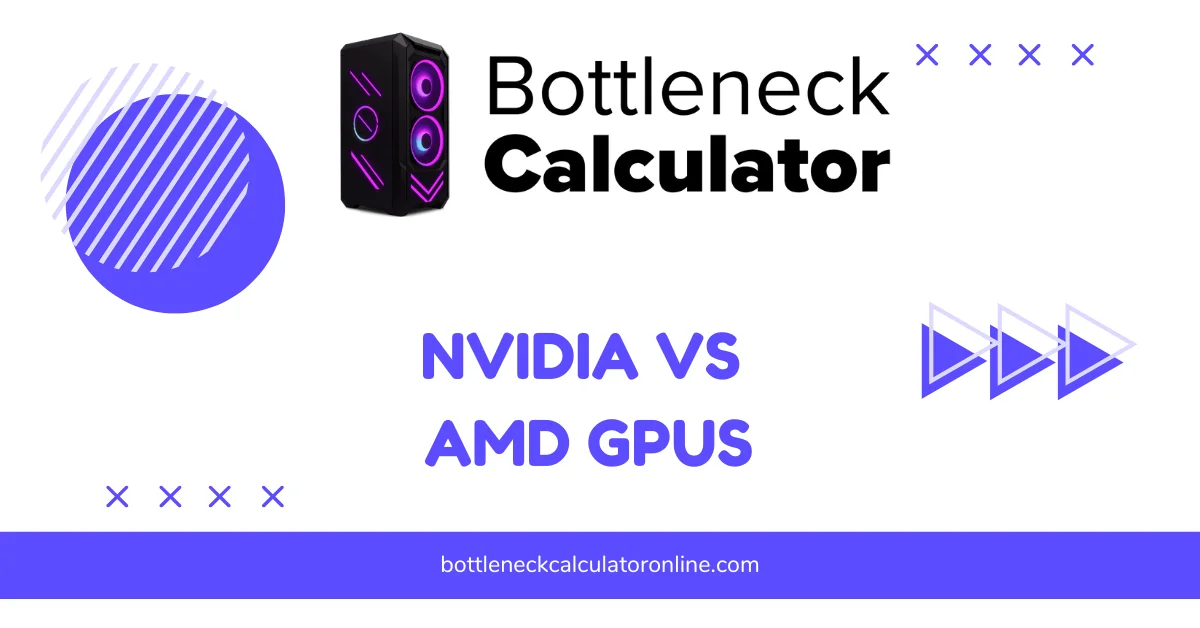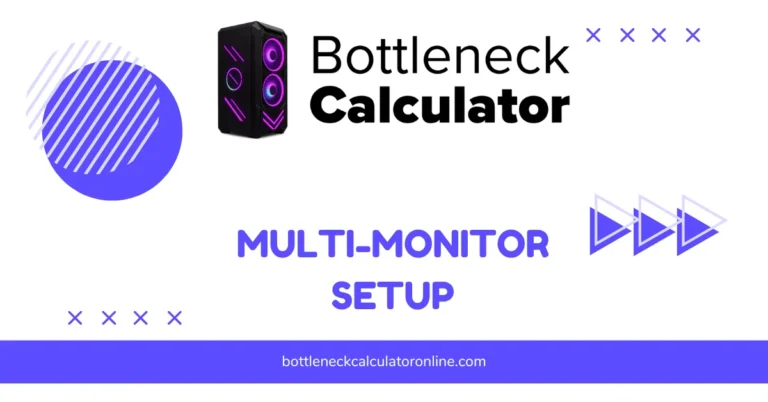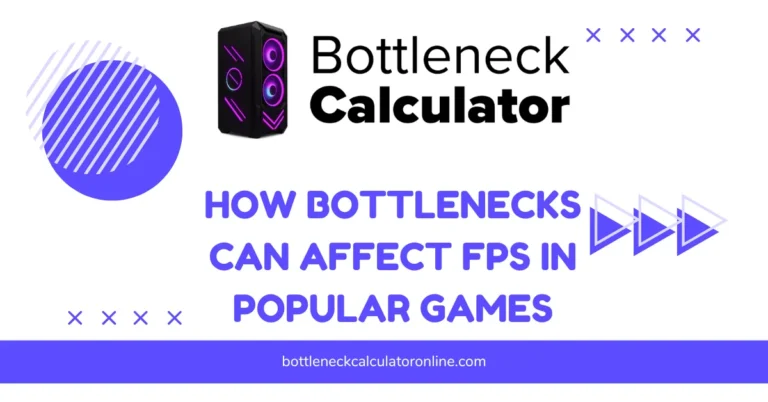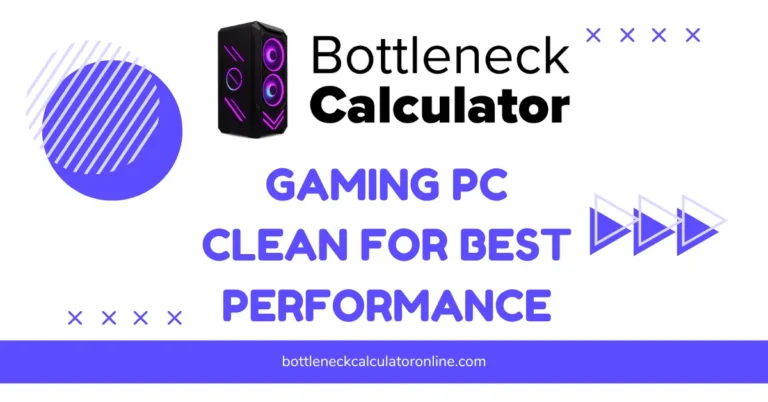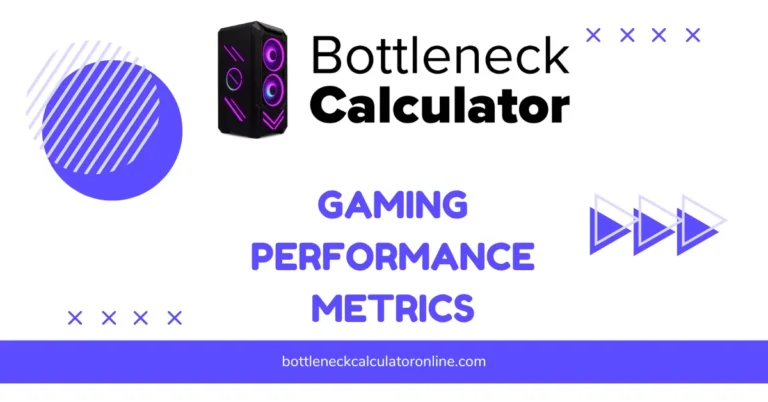Nvidia vs AMD GPUs: Performance and Value Comparison in 2025
I’ve watched the Nvidia vs AMD GPUs fight for years, and it’s always changing. Right now, both brands are doing some cool stuff, but they each have their own style. Nvidia keeps its spot at the top for high-end graphics cards and easy updates. AMD is known for better prices and cards that don’t use too much power. When you look at a real graphics card comparison, both are strong, but the winner depends on what you care about.
Nvidia loves being first with new things. Their DLSS tech can make games run smoother, even if you don’t have the fastest GPU. The RTX 4090, for example, is still the king for GPU performance 2025. It’s great for folks who want max settings, all the ray tracing, and just don’t want to mess around. Nvidia’s cards are easy to set up, and a lot of games work best with them right away.
AMD, though, has really stepped up. They focus on power efficiency GPUs and value. Cards like the RX 7900 XTX are fast, and you don’t have to spend all your savings. AMD’s FSR feature is their answer to DLSS, letting you get higher frame rates in new games, even on less pricey cards. I’d say AMD gives you more for your money, especially if you don’t need the very top specs.
When it comes to getting the most out of either card, knowing how to tweak your graphics settings can make a huge difference in performance and visuals.
Which one should you pick? Well, it depends. Gamers who want every little bit of speed for 4K or VR might lean Nvidia. If you’re gaming at 1080p or 1440p, or want good deals, AMD has you covered. Creators and pros might pick based on what their software likes best. Gaming GPU benchmarks from places like Tom’s Hardware and TechPowerUp show both brands have cards that win in different price ranges.
So, in this Nvidia vs AMD GPUs story, you’ve got choices. Both brands have solid options for all budgets. I’d say it comes down to what you really need and how much you want to spend.
Nvidia vs AMD GPUs: Nvidia’s Lead and AMD’s Challenge
Right now, Nvidia holds the biggest slice of the pie in the GPU market. Most folks see Nvidia market dominance in both gaming and pro cards, but AMD is still pushing hard to close the gap. This GPU market overview keeps changing, though—new tech and changing pricing strategies GPUs mean buyers get more choices every year. The strong fight between Nvidia and AMD GPU competition is what drives a lot of the cool technological innovation GPU market.
Sometimes you’ll hear about new players, like Intel, trying to join the party with their own GPUs. For regular buyers and businesses, all this means better cards, faster upgrades, and sometimes even lower prices. Market reports in early 2025 still show Nvidia on top, but AMD’s catching up, and things could shift again soon. If you want a full picture, some YouTube breakdowns show this pretty well.
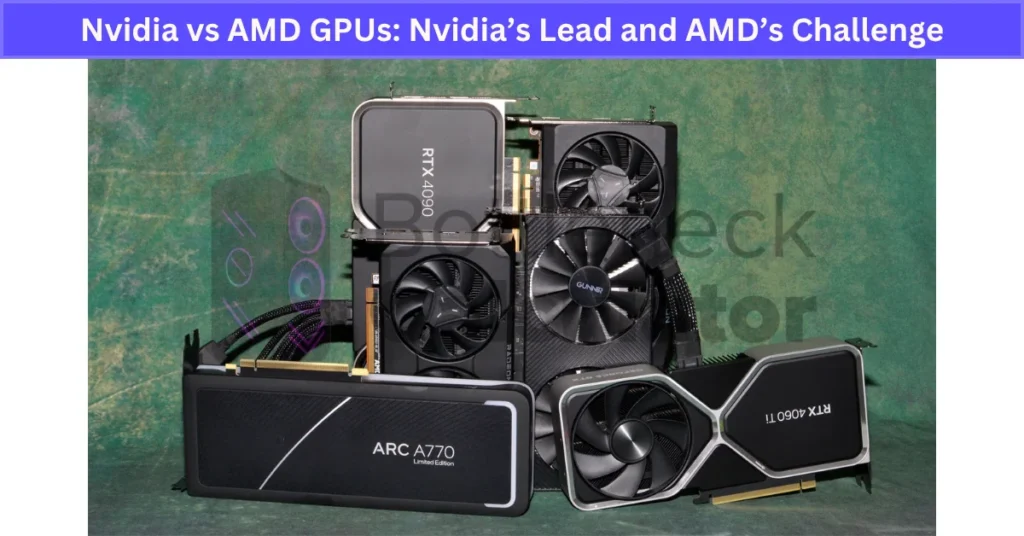
Overview of the Current GPU Market Landscape
The GPU market keeps changing as new tech and bigger demands show up every year. In early 2024, a lot of folks needed better cards for both gaming and stuff like AI or even a bit of crypto mining. Because of this, companies like Nvidia, AMD, and now Intel have all been trying to grab more of the market.
Nvidia still sits at the very top with about 88% GPU market share 2024. Most gamers, and even big companies that work with AI, trust Nvidia because their cards are fast and reliable. They have a strong grip on the GPU data center market too, powering a lot of those huge AI systems everyone talks about. That’s a big reason for Nvidia dominance—they lead in both regular gaming and super high-end uses.
But AMD isn’t just standing by. Their AMD Radeon value cards are a go-to for anyone watching their budget but still wanting solid performance. AMD keeps prices lower, which matters a lot when GPU prices are high or when there’s a supply shortage. Even though Nvidia is way out in front, AMD stays relevant by offering good deals and focusing on users who don’t want to spend a fortune.
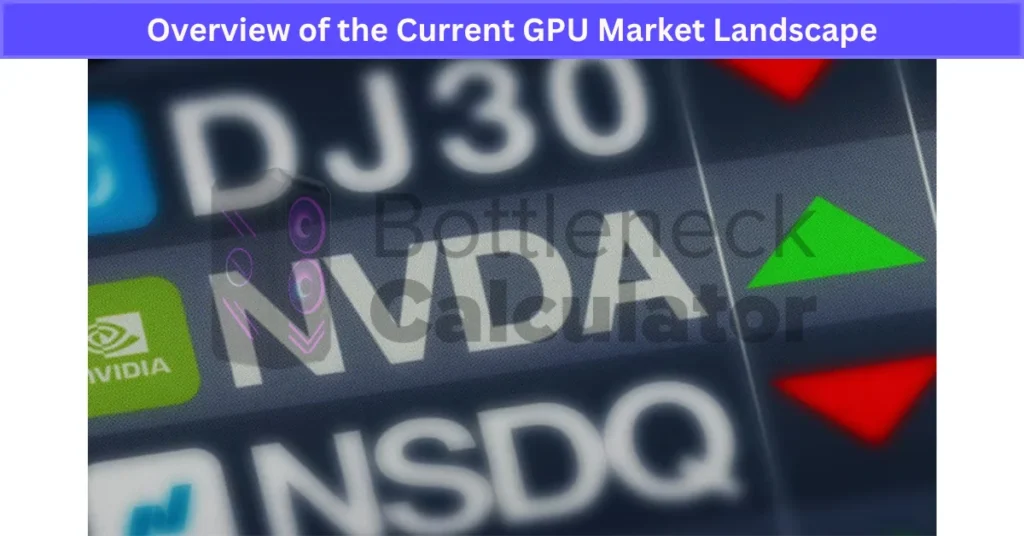
Now, Intel is the newest kid in the race. Their discrete GPUs Intel have started to make a mark, with about 4% of the market. That’s not huge, but it’s a start, and it means more choices for everyone. If trends in AI and gaming keep pushing up demand—and if chipset shortages pop up again—the whole landscape could shift fast. So, the fight for the top spot isn’t over yet.
Revenue Growth and Market Share Dynamics of GPU Leaders
When you look at the numbers, Nvidia stays out in front. Nvidia revenue 2022 hit about $26.9 billion, while AMD revenue 2022 landed a bit lower, around $23.6 billion. It’s a close race, but Nvidia’s still got the edge, thanks mostly to the AI hardware market taking off. The AI boom has changed everything—Nvidia’s data center business grew fast, with a big chunk of their money now coming from companies training AI models, not just selling gaming cards. It’s almost wild how much of Nvidia’s growth now comes from the data center side.
AMD, though, isn’t just sitting back. They’re spreading out their bets. Instead of only pushing GPUs, AMD has put a lot of focus into CPUs too, and their buyout of Xilinx has made them even stronger. The Xilinx acquisition gave AMD new tools for handling stuff like smart cars, networking, and even more AI work. So, their plan is all about having options—if one part slows down, another can pick up the slack.
When you hear from market analysts, they keep saying the GPU competitive landscape is only going to get tougher. With the world needing more powerful chips for everything—gaming, streaming, AI, even cars—both Nvidia and AMD keep throwing cash into new tech and production plants. But it hasn’t been all smooth sailing. Global chip shortages slowed down card deliveries and even changed how fast companies could grow their revenue.
Still, reports show the GPU market should keep climbing, especially with AI needs only getting bigger. A lot of experts think Nvidia will keep its lead in the AI space, but AMD’s spread-out business means they’re ready for any twists. Either way, tech investment and competition mean the next few years will be anything but boring in the GPU world.
Comparing GPU Technologies: Nvidia vs AMD GPUs Approaches
Both Nvidia and AMD make powerful GPUs, but they get there in different ways. Nvidia GPU architecture is all about pushing high-end speed and fancy tricks like real-time ray tracing. They use tech like DLSS, which uses AI to boost game frames, making things look sharp even if you’re not running on max power. AMD, on the other hand, builds their cards to give more value and keep things energy-friendly.
Their AMD GPU technology leans on features like FSR for upscaling, letting games run smoother even on mid-range cards. When it comes to performance optimization GPUs, Nvidia often wins in raw power, but AMD can be more efficient, especially if you care about your electric bill or heat. Both brands have made big improvements in GPU software support over the last year—AMD’s driver updates are more reliable now, and Nvidia still makes setup easy.

For advanced rendering features, Nvidia leads with ray tracing, but AMD’s catching up fast. If you want to see these differences in action, a bunch of YouTube tech channels have great head-to-head videos.
Key Architectural Differences Between Nvidia and AMD GPUs
Nvidia’s main strength comes from its CUDA architecture, which has been around for years and keeps getting upgrades. The big deal with Nvidia CUDA architecture is the extra hardware—like Tensor Cores for AI work and RT cores for ray tracing. These parts give Nvidia an edge in super-fast effects and things like DLSS upscaling. Because a lot of game and app makers design with CUDA in mind, Nvidia cards often run smoother out of the box, especially with pro software.
AMD goes with a different style. Their AMD RDNA architecture is built for gaming speed, focusing on streamlined compute units so you get solid frame rates without wasting power. For heavy compute jobs, like AI and data crunching, AMD uses CDNA, which is tuned for serious workloads. AMD’s cards don’t have Tensor Cores, but they pack a lot of raw power for gaming and offer their own upscaling tech.
Memory is another spot where these two brands split. AMD usually puts more GPU VRAM on their cards for the same price, which can help with big game textures or video projects. But Nvidia’s memory runs faster and uses smart compression, so it’s not just about the numbers—it’s about how quick that memory really works.
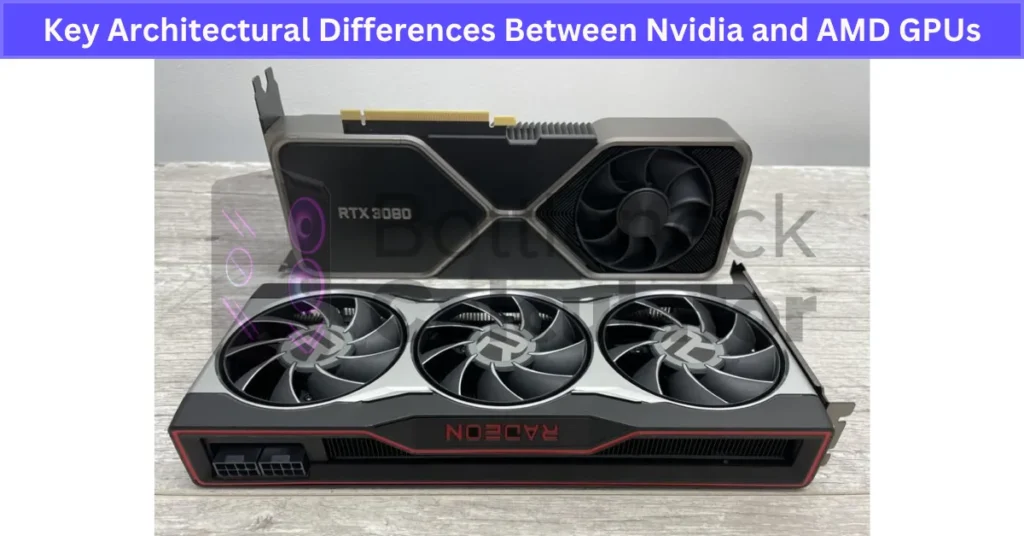
When it comes to GPU power efficiency, Nvidia is usually out in front, at least in top-end cards. Their chips give more performance for each watt, which matters if you care about heat or your energy bill. Nvidia also spends a lot on thermal design, so their coolers are a step above. AMD is closing the gap, though—newer RDNA cards run cooler and use less juice than old ones, making them a better pick if you want to keep things quiet and cool.
Comparing Gaming Performance of Nvidia and AMD Graphics Cards
When it comes to pure speed, the Nvidia RTX 4090 performance is still on top in 2025. Games like Cyberpunk 2077 or Alan Wake 2 look amazing and run super smooth, even with all the ray tracing cranked up. The AMD RX 7900 XTX isn’t far behind, though. In titles like Assassin’s Creed Mirage or Forza Horizon 5, it gives really strong results—sometimes even coming close to the 4090 but usually at a lower price.
If you’re watching your wallet, AMD’s got a reputation for the best deals in the midrange gaming GPUs segment. The RX 7800 XT and RX 7600 offer great value for 1080p and 1440p play. These cards aren’t just cheaper—they often use less power, which helps with heat and electricity bills too.
Nvidia keeps a grip on the mid-to-high end. Cards like the RTX 4060 and RTX 4080 handle modern games well at high settings, and they come with cool AI-powered GPU features like DLSS. With DLSS, you can turn on fancy graphics and still get smooth frame rates, even if your card isn’t the most expensive. These extras make Nvidia’s lineup more future-proof, especially for newer games.
Still, benchmarks can swing a lot. Some games run better on AMD, some on Nvidia, depending on which team the game devs support. Stuff like DirectX 12 optimization or Vulkan API gaming performance can change who wins in each game. If you’re unsure what might slow your system down, check out this full guide on GPU Bottlenecks in Gaming to understand how performance can vary beyond just benchmarks. Price-to-performance matters, and it’s worth checking the latest numbers for the games you actually play.
Comparing Driver Support and Stability: Nvidia vs AMD GPUs
Nvidia has built a strong name for quick and steady updates. Their Nvidia GeForce drivers often come out on the same day a big game drops. These game-ready drivers mean you can play right away, and the updates keep things smooth. The control panel is simple to use, with options that even beginners can figure out. For creators, Nvidia’s Studio Drivers are a bonus—those get special tweaks for editing, 3D, and pro tools.
AMD has caught up a lot when it comes to driver stability. Their AMD Adrenalin software is packed with features, and updates come often, though sometimes not quite as fast as Nvidia. The Adrenalin suite lets you tweak settings, track performance, and even stream. Many users say AMD drivers are more stable now than in past years, and that’s made a big difference.
When new games come out, Nvidia usually pushes updates a bit faster, which helps keep things running great right away. AMD follows close behind, but sometimes you’ll wait a little longer for the perfect patch. Most games work fine on both, but if you always want the newest support, Nvidia still has the edge.
For Linux GPU support, AMD leads with open-source drivers that work right out of the box in most distros. Nvidia is more closed, but offers certified drivers that are trusted for business and science work. When it comes to professional GPU certification, Nvidia still gets the top marks for big-name creative apps. AMD is making progress, but Nvidia is the safer bet for pro workflows.
AI and Ray Tracing Technologies: Nvidia vs AMD GPUs
Nvidia was first to bring hardware-accelerated ray tracing to gamers, using special Nvidia RT Cores built right into their GPUs. These cores make shiny lights, shadows, and reflections in games look way more real, and most experts agree Nvidia is still ahead here. AMD has its own ray tracing tech, but right now, it’s not quite as fast or smooth, especially in big, demanding games.
When you look at AI upscaling technology, Nvidia’s DLSS stands out. It uses AI and those extra Tensor Cores to make games look sharp, even when you’re playing at lower resolutions. In the battle of DLSS vs FSR, DLSS usually looks better and boosts frames more, but AMD’s FSR works on more cards and is open to everyone—not just AMD or Nvidia.
Both brands now offer frame generation tech to push game frame rates higher. Nvidia’s version runs on RTX cards, while AMD’s works across more GPUs, but it’s a little less advanced. If you want every last frame for smoother gameplay, these features make a big difference—especially when used with Multi-GPU Setups designed to balance loads across cards for demanding titles.
Nvidia’s AI muscle isn’t just for games. Those AI acceleration GPUs help out with editing videos, AI art, and all sorts of pro creative work. Nvidia keeps working on next-gen stuff, too—their RTX 50 series promises even better ray tracing and smarter AI features down the road. So while AMD is catching up, especially with more open tech, Nvidia still leads when you want top-level graphics or pro power for creative jobs.
Notable GPU Products and Features from Nvidia and AMD
Both Nvidia and AMD have built wide product ranges to fit just about any budget. The Nvidia GPU lineup stretches from budget-friendly cards to ultra-high-end options like the RTX 4090, and also covers niche pro needs with workstation RTX models for creative work and AI. AMD responds with its own spread of AMD graphics cards, including value picks for gamers, power-friendly midrange options, and its Pro series aimed at the professional GPU market.
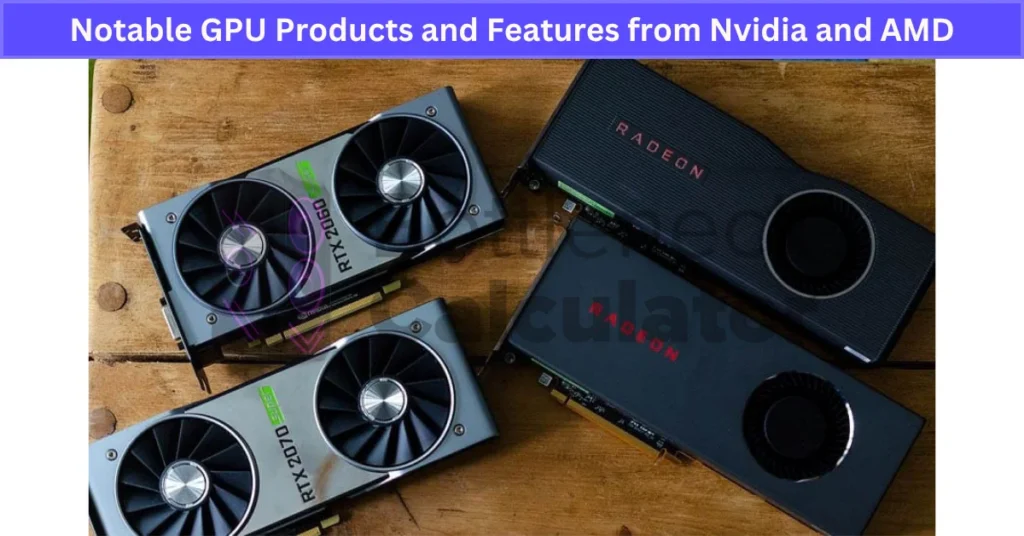
Each brand brings out unique gaming GPU features—Nvidia with DLSS, AMD with FSR—and they both keep adding support for new things like VR and AI. No matter your needs or price range, there’s a card out there. If you want a closer look, plenty of YouTube videos break down these GPUs by segment and feature.
Flagship GPU Showdown: Nvidia RTX 4090 vs AMD RX 7900 XTX
The Nvidia RTX 4090 is the top dog for 4K gaming. With 24GB of GDDR6X memory and thousands of CUDA cores, this card crushes most benchmarks and leads the way in ray tracing GPU power. It’s built for speed, but you’ll notice it runs hot and draws a lot of watts, so big fans and strong cooling are a must for long play sessions. Most real-world tests, like those from TechPowerUp, show the RTX 4090 sitting at the top in almost every game, especially when you turn on all the extra graphics.
On the other side, the AMD RX 7900 XTX uses 24GB of GDDR6 and the latest RDNA 3 tech. This card isn’t quite as fast as the 4090, but it gets pretty close in a lot of 4K gaming performance numbers, especially if you don’t crank up ray tracing. AMD offers better efficiency—GPU power consumption is lower, so you won’t need as beefy a power supply, and cooling is easier to manage.
When it comes to price, AMD’s card is more wallet-friendly, and the value for what you pay is hard to beat. You do lose a bit in ray tracing, but for most people, the small difference doesn’t outweigh the savings. If you want the very best, Nvidia wins this flagship GPU comparison, but if you care about power bills or up-front cost, the RX 7900 XTX makes a strong case.
Mid-Range and Budget GPU Options: Nvidia vs AMD
The Nvidia RTX 4070 sits near the top for mid-range gamers who want smooth 1440p gaming performance. It handles most new games well and really shines with DLSS, helping boost frame rates even if you don’t have top hardware. The price is a bit higher than some rivals, but you get reliable drivers and steady performance.
AMD’s lineup, like the AMD RX 7700 XT and 7800 XT, usually packs in more VRAM in graphics cards for the money. That extra VRAM is great for future-proofing, especially as games use bigger textures and new features. Both the 7700 XT and 7800 XT handle 1440p with ease and often cost less than Nvidia’s options.
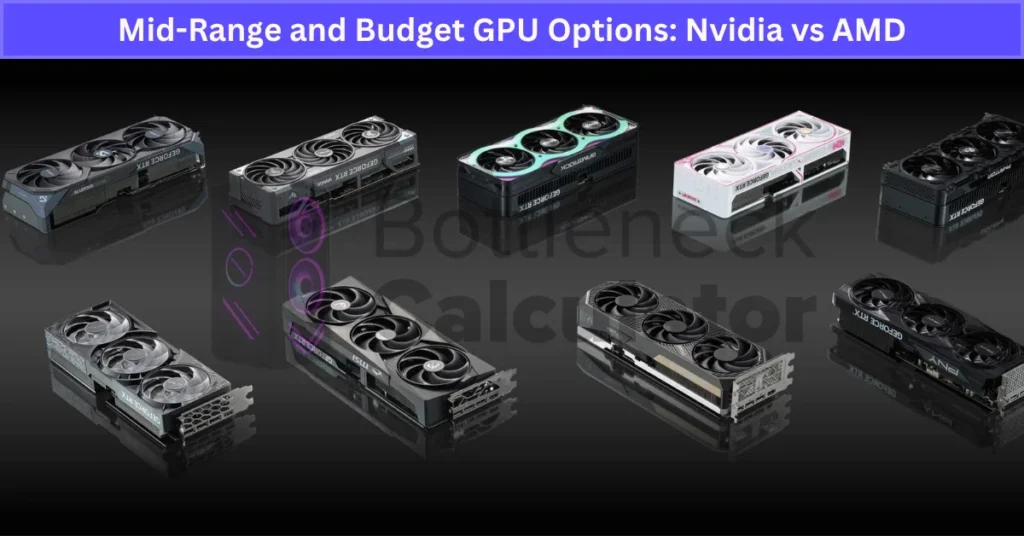
For budget buyers, the RX 7600 vs RTX 4060 fight is close. The AMD RX 7600 is usually cheaper and gives you decent power for 1080p or lighter 1440p gaming. The RTX 4060 runs cooler and gets some extra points for DLSS, but it has less VRAM, which could matter as games get bigger. If you want the most bang for your buck, AMD’s budget gaming GPUs are hard to beat—just keep an eye on prices since they can swing up or down fast. When picking, think about how much VRAM you’ll need for future games, not just what works today.
Emerging GPU Technologies and What the Future Holds
Nvidia is still leading the charge in AI acceleration GPUs, thanks mostly to the huge reach of the Nvidia CUDA ecosystem. This tech is used everywhere now—big studios, AI labs, and even game makers are relying on CUDA for faster work and smarter AI tricks. We’re already seeing games get AI-powered boosts, but there’s talk that soon, GPUs could help make game worlds that change as you play, with AI handling the little details.
When it comes to making games look better without slowing things down, the DLSS vs FSR battle keeps getting hotter. Nvidia’s DLSS uses AI to make images sharper and smoother, while AMD’s FidelityFX Super Resolution works on more cards and even on some Nvidia chips. If you’ve got older hardware, FSR is a lifesaver. This push for cross-hardware support means even more players get better graphics without buying new parts every year.
Ray tracing still shows a gap, with Nvidia out front, but AMD is catching up. Their next-gen RDNA 4 architecture promises big steps in lighting and reflection realism. Most folks agree the future’s looking bright here—upcoming GPUs should handle full ray tracing at high frame rates, making games even more lifelike.
Software matters, too. Nvidia’s drivers are mature and steady, but AMD has stepped up with things like Radeon Anti-Lag and smarter updates. GPU driver stability is better than ever, with both brands listening to gamers and fixing bugs faster. With so much competition, plus big industry team-ups—like Nvidia and top AI research labs or AMD working with game studios—the next few years should bring huge changes to how we play and create.
Why Ecosystem and Compatibility Matter When Choosing GPUs
Picking a GPU isn’t just about speed or memory—the GPU ecosystem and software support play a huge part in how good your experience will be. Nvidia software support is strong because of tools like CUDA, making it the favorite for people who need special apps or do creative work. On the other hand, AMD compatibility shines for folks who want open standards or use Linux, since AMD drivers often work better out of the box on those systems.
Both brands keep making GPU operating system support smoother, but differences in cross-platform GPU compatibility can shape what runs best on your PC. It’s not just about numbers on a spec sheet—how the card fits your software and setup matters a lot. If you want to dig in, there are good YouTube breakdowns that show how the ecosystem really affects your daily use.
Gaming and Software Ecosystems: Nvidia vs AMD GPUs
Nvidia leads the way with its CUDA platform, which has become the gold standard for AI, deep learning, and tons of pro creative apps. This advantage stretches into gaming, too, where DLSS technology helps players get higher frame rates without losing picture quality. For creators, Nvidia’s Studio Drivers make working in editing and 3D software smoother, giving them a real edge if you need more than just gaming power.
AMD has made progress with its ROCm framework for AI, but it’s not as widely adopted as CUDA. Still, gaming GPU compatibility is solid—most new games run well on AMD cards, and creative apps like DaVinci Resolve keep getting better support. AMD’s drivers are more stable now, thanks to a bunch of community feedback, but some pro software features arrive slower than with Nvidia.
When it comes to drivers, Nvidia’s Game Ready Drivers drop as soon as big games come out, often giving smoother launch day performance. AMD’s Adrenalin software suite has improved, offering a ton of tweaking tools and regular updates, but sometimes arrives a bit behind Nvidia for new game optimizations. Both keep getting better, but Nvidia still has the edge if you want the absolute latest and greatest support.
Adaptive Sync Technologies: Nvidia G-Sync vs AMD FreeSync
Nvidia G-Sync is known for its tight quality control, using special hardware and strict monitor certification to keep gameplay smooth. G-Sync monitors usually cost more, but you get premium performance, less input lag, and great screen tearing reduction—which matters a lot in fast games.
AMD FreeSync takes a more open route. It works with regular monitor hardware, so it’s cheaper and way more common. FreeSync covers a bigger slice of the market, letting more gamers try adaptive sync technology without spending a ton.
Nvidia also lets you use some FreeSync monitors with its G-Sync Compatible program. It’s not always as perfect as real G-Sync, but it does a solid job in most cases. Both G-Sync and FreeSync help keep games looking clean and smooth, though G-Sync can be a bit more reliable, especially if you’re after the very best. Now, with new HDMI 2.1 gear and variable refresh rate (VRR) becoming a thing, syncing tech is only getting better for everyone.
Linux and Open-Source Support: AMD vs Nvidia
For folks using Linux, AMD really stands out thanks to its strong open-source GPU drivers. Most AMD cards just work right out of the box with popular Linux distros, making AMD Linux compatibility a big plus. The drivers are built right into the Linux kernel and the Mesa graphics stack, so you usually don’t need to mess with downloads or setups. That means quicker installs and fewer headaches if you’re new to Linux or just want things to work without extra effort. The open nature of AMD’s drivers also means updates and fixes come fast from the community.
Nvidia, on the other hand, sticks with Nvidia proprietary Linux drivers. They offer strong hardware, but setting them up on Linux isn’t always simple. Sometimes you’ll hit install issues or need to manually grab the right version. While Nvidia’s closed-source drivers do deliver great performance once they’re working, the setup can trip up less experienced users. There are open-source efforts, like the Nouveau project, trying to bring better Linux GPU support for Nvidia cards, but they still lag behind official drivers, especially with the latest hardware.
When it comes to gaming on Linux, AMD often wins for ease of use. Their cards are well-supported by the Mesa graphics stack, so games launched through tools like Proton on Steam usually run smoother without much fuss. Nvidia’s hardware is powerful—some of the best for gaming—but the driver experience on Linux can feel hit or miss. That said, Nvidia has made progress lately, improving kernel compatibility and getting updates out faster, but it still doesn’t match AMD’s “plug and play” feel.
So, if you’re building a Linux machine and want things to just work, AMD is the safe bet. If you need the absolute best gaming speeds and don’t mind tinkering, Nvidia’s an option, but be ready for a little more setup work. Overall, the gap is getting smaller, but for now, AMD is the friendlier choice for most Linux users.
Real User Fixes & Community-Backed Solutions
We found a user on r/pcmasterrace asking about switching from Nvidia to AMD GPUs in 2025, curious about game compatibility, drivers, and software features. Responses were mostly positive about AMD’s current state, highlighting that AMD drivers are generally stable and their Adrenalin software offers robust features like built-in overclocking and fan controls without needing third-party tools. Some users noticed improved visual sharpness and better price-to-performance with AMD, though a few pointed out that Nvidia’s DLSS still holds an edge over AMD’s FSR in upscaling quality. Advice included doing a clean driver uninstall when switching to avoid conflicts. Overall, switching to AMD is seen as a solid choice nowadays, especially for those who enjoy tweaking and customization.
We found another user on r/linuxhardware discussing the choice between AMD Radeon and NVIDIA RTX GPUs for gaming and local AI workloads in 2025. The original poster shared their experience with a GTX 1070 on Manjaro Linux and expressed concerns about driver stability and features, especially for AI tasks like Stable Diffusion and Ollama. Commenters generally agreed that while AMD’s open-source drivers offer solid Linux support and better value—highlighting the Radeon 7900XTX as a strong choice for gaming and AI—NVIDIA GPUs remain dominant for AI due to their specialized hardware and ecosystem. However, AMD is praised for continuing software improvements on older cards, whereas NVIDIA sometimes retires support for older models. The discussion reflected a nuanced trade-off between gaming performance, AI capabilities, and Linux driver support.
Quora
We found a Quora discussion debating which graphics card company—Nvidia or AMD—is more suitable for large-scale AAA games in 2025. Opinions suggest both brands offer strong GPUs, but Nvidia tends to be preferred for AAA titles due to better optimization and broader game support. Nvidia’s top-tier cards, like the RTX 4090, deliver unmatched 4K performance, though AMD offers competitive alternatives like the RX 7900 XTX at more reasonable prices. Some highlight that for resolutions below 1440p, the choice is less clear, with both companies producing capable cards. Overall, Nvidia currently leads in raw power and software ecosystem, while AMD appeals with value and VRAM advantages, making the best choice depend on budget and specific gaming needs.
Final Verdict For Nvidia vs AMD GPUs
In 2025, the Nvidia vs AMD GPUs battle is closer than ever, but each brand still shines in its own way. Nvidia keeps the performance crown at the very top end with cards like the RTX 4090, leading in raw power, ray tracing, and AI features like DLSS—perfect if you want the absolute best 4K or VR experience and don’t mind paying more. Their drivers are fast, stable, and especially good for creators and anyone who relies on CUDA or Studio tools.
AMD, on the other hand, is the go-to for value. Cards like the RX 7900 XTX and the 7800 XT offer great gaming performance, lots of VRAM, and strong energy efficiency at much friendlier prices. Their open-source Linux support and improving Adrenalin software make AMD a favorite for tinkerers and those who want solid performance without breaking the bank. FSR upscaling works on more hardware, too—even older cards.
For most gamers, you can’t go wrong with either brand. Pick Nvidia if you want the latest tech, creative workflows, or top-tier ray tracing. Go AMD if you want the best price-to-performance, cooler running cards, and easy Linux compatibility. The real winner is anyone shopping in 2025—there are more good choices than ever, so just match your card to your needs, budget, and favorite games.
FAQ’s
What is the best GPU for gaming in 2025?
For 1080p gaming right now, I’d say the best graphics cards are the Nvidia GeForce RTX 4060 and the AMD Radeon RX 9060 XT. The upcoming RTX 5060 could end up beating the 4060 once full reviews are in, and there are also solid picks for other budgets or higher resolutions if you need more power.
What is the market share of AMD vs Nvidia in 2025?
In Q1 2025, Nvidia holds a huge 92% share of the AIB GPU market, while AMD sits at 8% and Intel remains at 0%. These numbers come straight from Jon Peddie Research’s latest PC market statistics.
What is Nvidia planning for 2025?
At CES 2025, Nvidia announced Project DIGITS, their new personal AI supercomputer, along with fresh advances in consumer graphics, robotics, and autonomous vehicles.
Is AMD going to overtake Nvidia?
AMD is still playing catch-up with Nvidia in the AI chip market, according to Seaport Research, mostly because Nvidia has stronger production and execution skills and more leverage with big customers. While AMD is working to boost its own chip-making abilities and hedge its bets, it faces real challenges competing with Nvidia’s established lead. How well AMD can build on these internal efforts will shape its future in the AI chip space.

